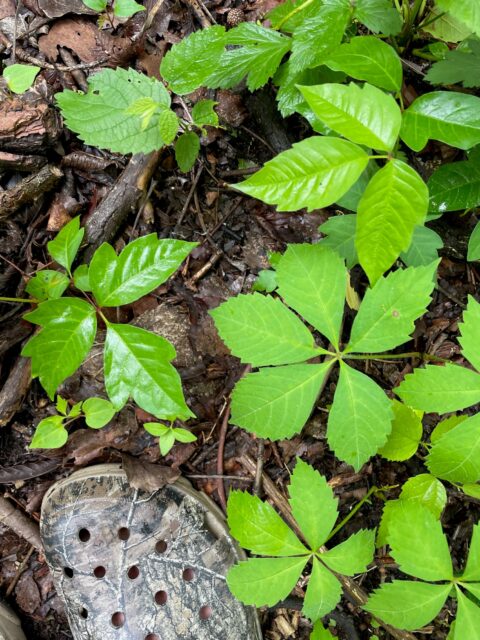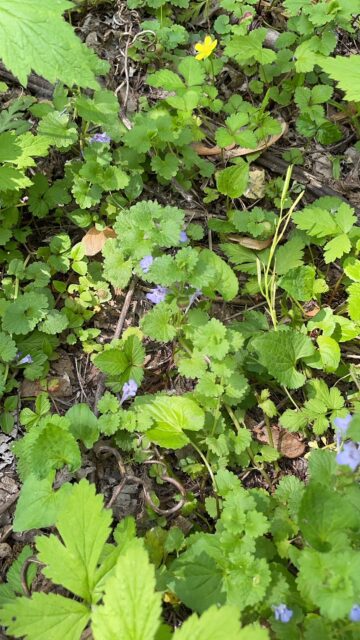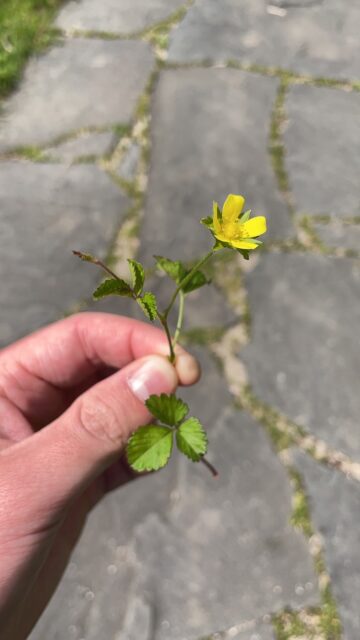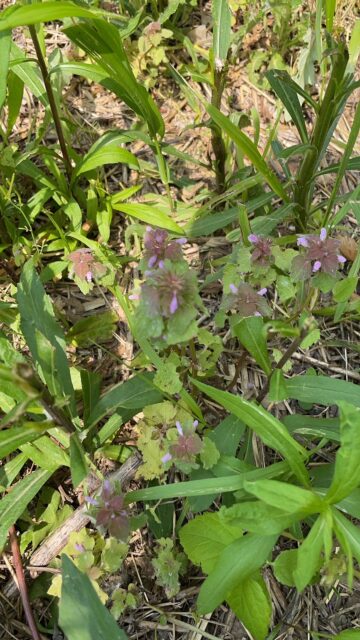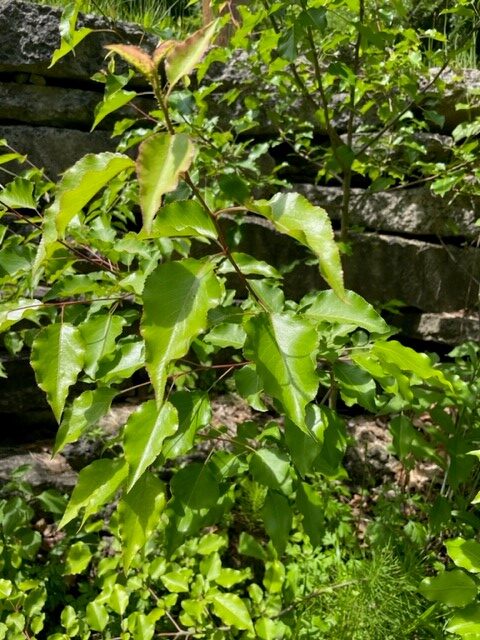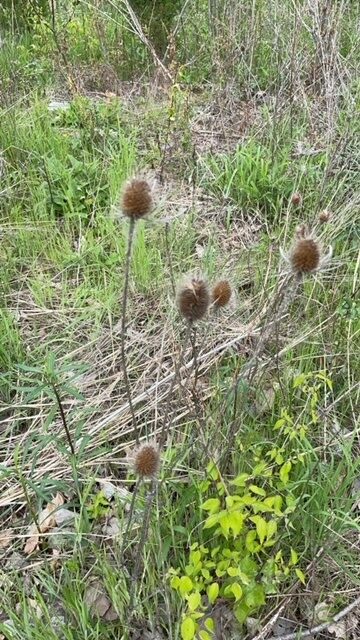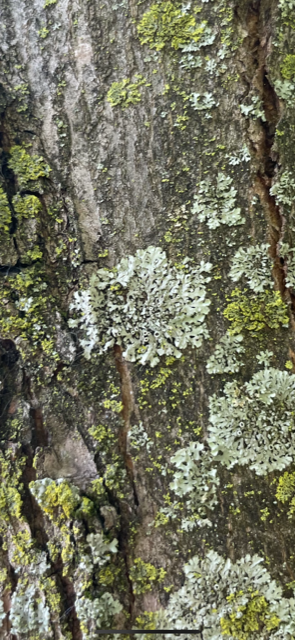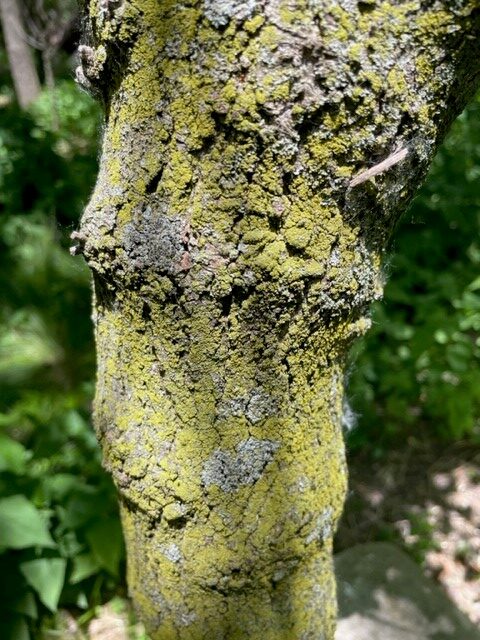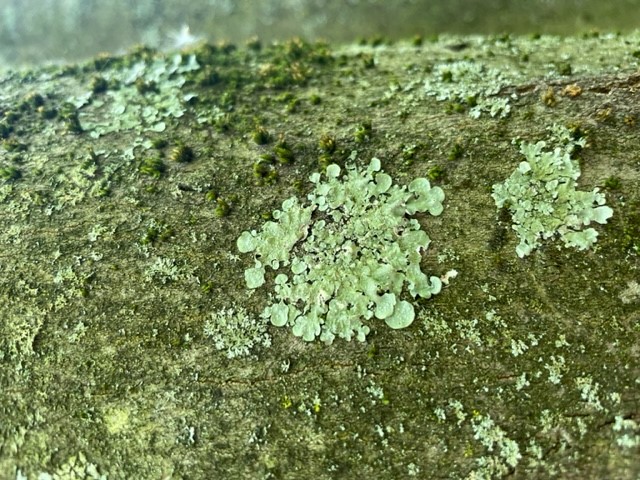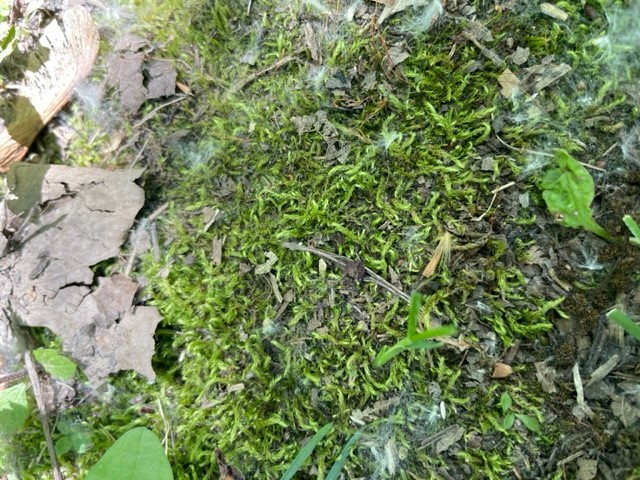The Site
The Olentangy River Wetlands Research Park is a 52-acre plot of land located on West Dodridge street just north of campus and is utilized by the university to research a variety of natural sciences. The land runs along the Olentangy River and is made up of wetlands, bottomland hardwood forest, and a few open grassy areas around the site’s main buildings. This site has been affected greatly by human activity, as it is commonly used by students for classes, and by passersby’s using the bike path that passes through it. A majority of the site is taken up by man-made wetlands titled “the kidneys” which support various wetland plants.

As you can see from the map above, the site contains two kidney shaped wetlands. The site also is influenced by the Olentangy River, and Olentangy bike path which sees frequent use by bikers and walkers.
Poison Ivy
Toxicodendron radicans, aka poison ivy is one plant that has caused me much suffering in my life. It grows as a vine and ground cover making it very difficult to stay out of. While the saying “leaves of three let it be” does work, there are better ways of recognizing this species. First off, poison ivy will in fact have 3 leaves that do have some degree of serration. The vine of poison ivy will possess rootlets that are used to anchor itself onto trees as well. Its drupelet fruits will be white in coloration, acting as a warning sign not to touch. If you do get into poison ivy, wash and scrub the affected area with soap and water to remove the irritating urushiol oil as fast as you can.
Flowers and Inflorescences
Erigeron philadelphicus- Philadelphia fleabane
This species was seen on the edge of the bike path in a spot receiving sunlight through the canopy. Radial symmetry, separate petals, epigynous ovary, and syncarpous gynoecium are the characteristics of this species. This species has a raceme inflorescence type and produces achenes.
Glechoma hederacea- Ground Ivy
This plant was found growing along a path in the dry and well-lit field just north of the main building. It has 5 parted flowers, bilateral symmetry, fused petals, epigynous ovary, and syncarpous gynoecium. This species has a spike inflorescence type, and schizocarp fruits.
Duchesnia indica– Mock strawberry
Mock strawberry was found all around the open grassy areas around the site. It has separate radially symmetric flowers, with 5 petals and 5 sepals, an perigynous ovary and an apocarpous gynoecium. It produces an accessory fruit and has thyrse inflorescences.
Lamium purpureum- Purple dead-nettle
This species was common throughout the bright open grassy areas of the site. It has regular symmetric 5-merous parts, fused petals, epigynous ovary, and apocarpous gynoecium. It has a spike infloresence type, and a schizocarp fruit type.
Invasives
Securigera varia- Purple crown-vetch
This species grows native in Africa, Asia, and Europe. It was originally brought to the states in the late 1800s for erosion control but quickly spread out of hand. Its particularly taken over meadows, and open areas but will also spread in areas nearby water sources. To control, the plant can be manually pulled, or the affected area can be covered in landscaping fabric for a growing season to restrict it from light.
Lonicera mackii– Amur honeysuckle
This species was brought to the US in the late 1800s from eastern Asia to act as erosion control and for ornamental purposes. Because of its tolerance, this plant is pretty much a problem in every ecosystem in the state. To control it, the plant must be cut, and the leftover stump sprayed with herbicide to prevent regrowth.
Pyrus calleryana– Callery pear
Callery pear was brought in the early 1900s from Asia as another ornamental species, and rootstock for other pear species. After being a popular landscaping species for years, the species has now spread throughout the state, particularly in areas close to human influence. This tree will resprout after cutting, so again, an herbicide should be used to keep it dead.
Dipsacus fullonum– Common teasel
Common teasel was brought to the US in the 1700s from Asia and Europe to aid in the production of wool. This species is especially a problem on the sides of roads and open fields where it can receive sunlight. The best removal method is spraying adult specimens so they cannot spread their seeds, and pulling younger plants before they are able to reproduce.
Woody Plant Fruits + A Member of Apiaceae
Morus alba- White mulberry
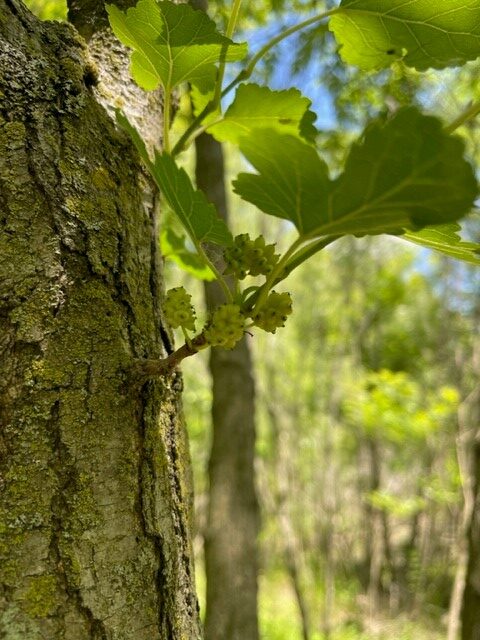
White mulberries have fruits that are oblong in shape, less than 1 inch in diameter, and white in color. They are made up of many smaller units packed together giving them their title of an accessory fruit made up of single seeded drupes.
Cercis canadensis- Eastern redbud
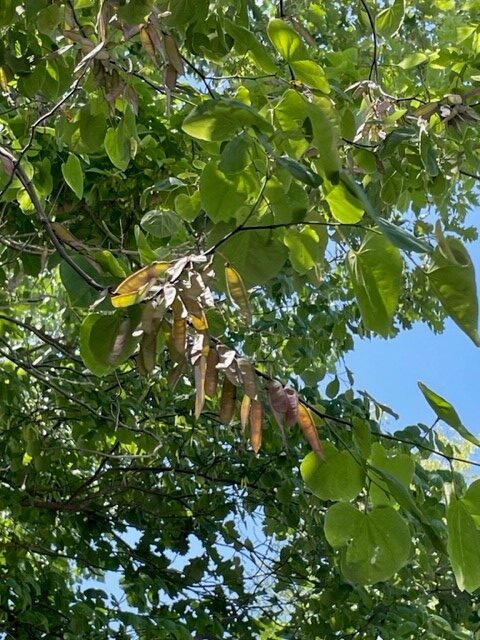
Eastern redbuds are apart of the Fabaceae family, and in turn have legumes that split from two sides. Their pods are pretty straight and less than 8 inches in length. The individual seeds of this species are also not reniform, differentiating them from black locust.
Acer saccharinum- Silver maple

The large ~2-inch-long samaras of silver maple are one of their best defining characteristics. Another is that this samara was found in the early summer, when they are expected to be on the ground. The paired samaras also distinguish this species from ash species. This fruit is just an achene with a wing on it.
Toxicodendron radicans- Poison Ivy
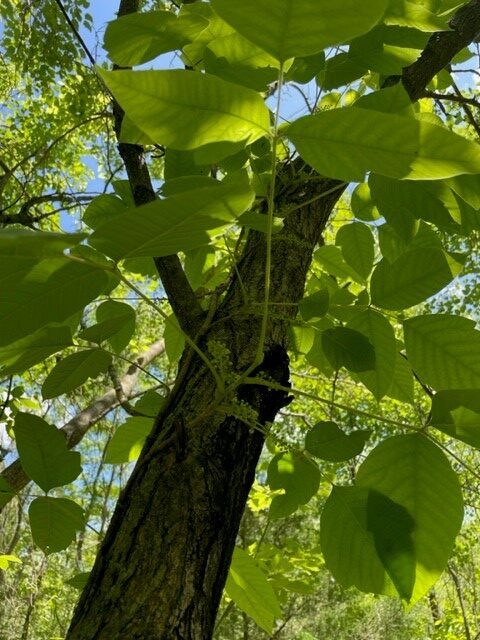
Although not in the book, poison ivy is distinguishable by its fruit. The plant has drupes for fruits which are made up of single seeds. They are small in size at about 1/4 of an inch and are a light green to white color depending on the time of year. The fruit itself is smooth, but I don’t suggest touching or eating it.

